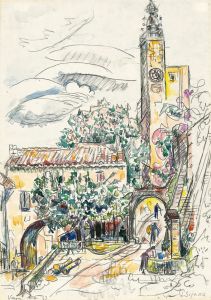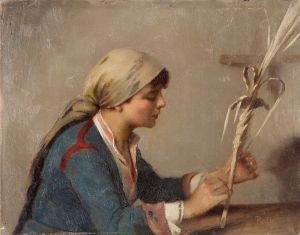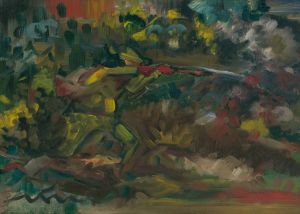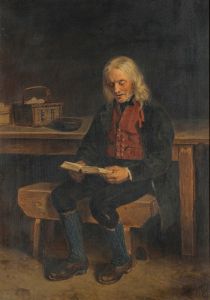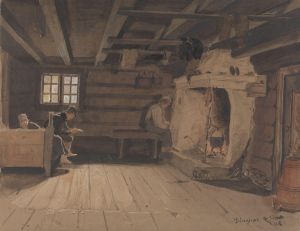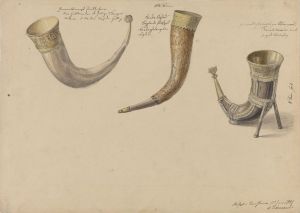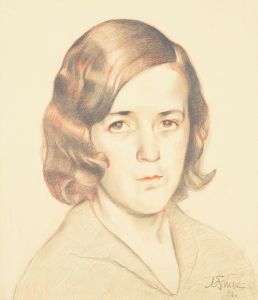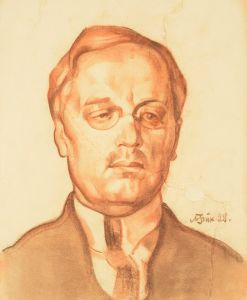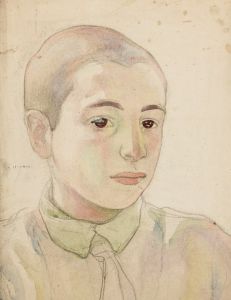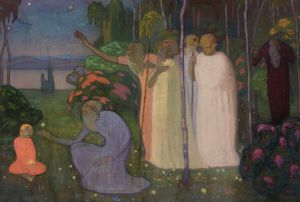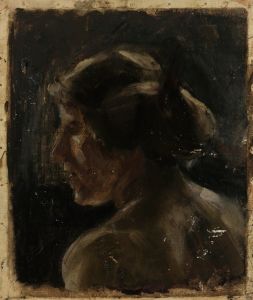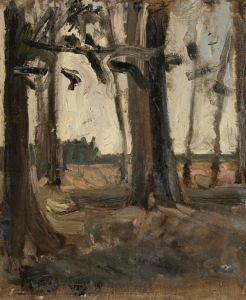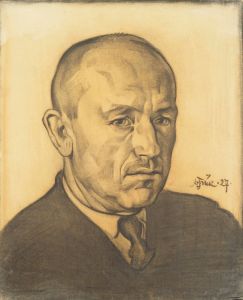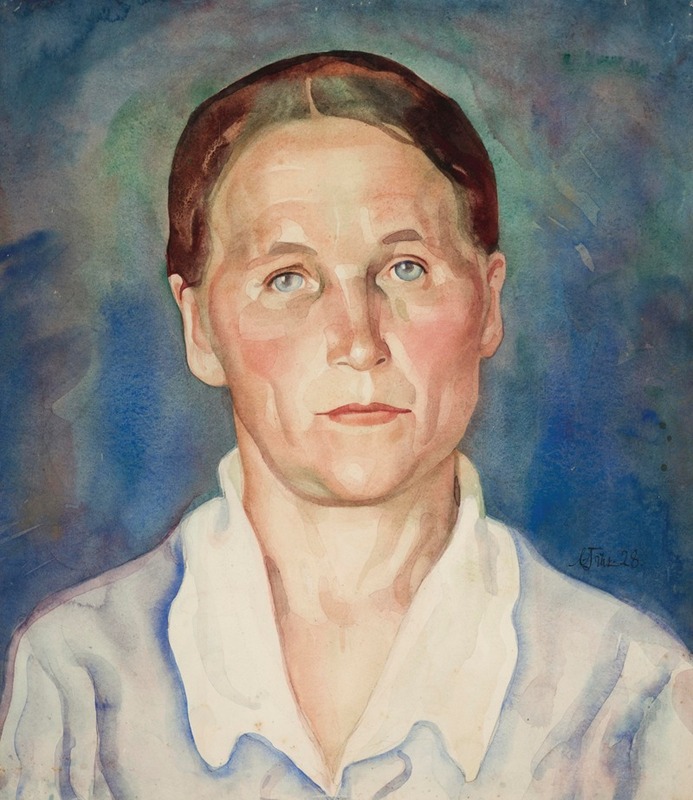
Naise portree
A hand-painted replica of Nikolai Triik’s masterpiece Naise portree, meticulously crafted by professional artists to capture the true essence of the original. Each piece is created with museum-quality canvas and rare mineral pigments, carefully painted by experienced artists with delicate brushstrokes and rich, layered colors to perfectly recreate the texture of the original artwork. Unlike machine-printed reproductions, this hand-painted version brings the painting to life, infused with the artist’s emotions and skill in every stroke. Whether for personal collection or home decoration, it instantly elevates the artistic atmosphere of any space.
Naise portree, translated as "Portrait of a Woman," is a painting by the renowned Estonian artist Nikolai Triik. Born on August 7, 1884, in Tallinn, Estonia, Triik was a pivotal figure in the Estonian art scene during the early 20th century. He is best known for his contributions to modernist art and his role in the development of Estonian national art.
Triik's artistic journey began at the St. Petersburg Academy of Arts, where he studied from 1903 to 1905. His education was interrupted by the Russian Revolution of 1905, which led him to move to Finland. There, he continued his studies at the Finnish Art Society Drawing School in Helsinki. Triik's exposure to various European art movements during his travels significantly influenced his style, which is characterized by a blend of symbolism, expressionism, and impressionism.
Naise portree is a testament to Triik's skill in portraiture, a genre he frequently explored. The painting captures the essence of the subject with a focus on emotional depth and character. Triik's use of color and brushwork in this piece reflects his modernist tendencies, with an emphasis on capturing the psychological presence of the sitter rather than just their physical likeness.
The painting is notable for its composition and the way Triik employs light and shadow to create a sense of intimacy and immediacy. The subject's expression and posture are rendered with a sensitivity that suggests a personal connection between the artist and the sitter, a common trait in Triik's portrait work. This approach aligns with the broader trends in early 20th-century portraiture, where artists sought to convey more than just the external appearance of their subjects.
Triik was an active member of the Noor-Eesti (Young Estonia) movement, which aimed to foster a sense of national identity and cultural independence through art and literature. His work, including Naise portree, often reflects the ideals of this movement, emphasizing individuality and the exploration of the human condition.
Throughout his career, Triik participated in numerous exhibitions, both in Estonia and internationally. His work was well-received, and he became a prominent figure in the Estonian art community. In addition to painting, Triik also worked as an art teacher, influencing a new generation of Estonian artists.
Naise portree, like many of Triik's works, is housed in the Art Museum of Estonia, which holds a significant collection of his paintings. The museum's collection provides insight into Triik's development as an artist and his contributions to Estonian culture.
Nikolai Triik passed away on August 12, 1940, in Tallinn. His legacy endures through his art, which continues to be celebrated for its emotional depth and innovative approach. Naise portree remains an important piece within his oeuvre, exemplifying his mastery of portraiture and his commitment to capturing the complexities of human emotion.





